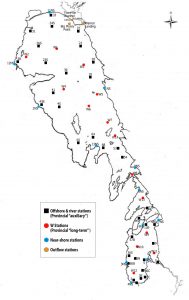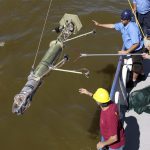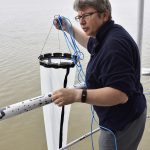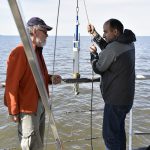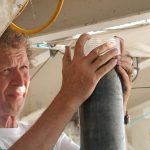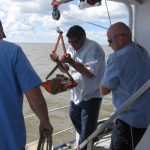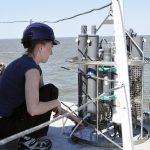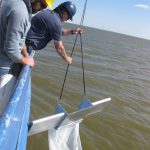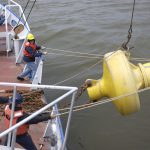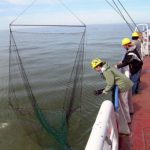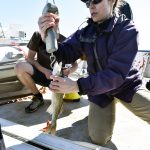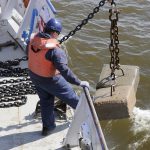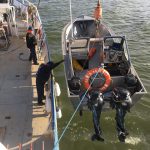Science Program
Science Support and On-Lake Infrastructure
The LWRC’s Science Program coordinates whole lake scientific research and monitoring on Lake Winnipeg to gain a better understanding of ecological processes and how they are changing over time, and to support lake and watershed management decision making. For a brief introduction to the LWRC and its Science Program, check out this 15 minute video on the LWRC’s YouTube channel.
Currently, the Program offers science support and infrastructure in the form of:
- Two research vessels, Motor Vessel (MV) Namao and MV Fylgja;
- Three whole lake surveys during the open water season (spring, summer, fall);
- A network of 65 stations (including offshore, nearshore, river mouths, and outflows);
- Lake access for Special Projects, upon request; and
- A Scholarship to honours and graduate students.
We also hold an annual Science Workshop (see below) to convene the active science agencies. Annual program reports and State of the Science reports can be found on the Documents page.
If you are a scientist or graduate student interested in joining the science team, contact Dr. Karen Scott – Science coordinator – using the Contact form.
On-Lake Field Program
Since 2002, the LWRC has offered three, whole-lake research surveys annually – spring, summer and fall – to the scientific community. Each survey includes access to an established network of sampling stations.
Station Network
For the first 10 years, roughly 65 stations comprised the “offshore” station network on Lake Winnipeg. As new stressors are imposed on the lake ecosystem and research questions and monitoring needs change, the LWRC’s Science Program has responded in part by modifying this station network. In 2012, two “nearshore” stations were introduced in the north basin in an effort to begin to characterize the nearshore area prior to the imminent arrival of zebra mussels. The ecological changes associated with this invasive species can be profound – from changes in chemistry to fish – and the nearshore area will be the first to manifest such changes. In 2014, 10 additional nearshore sites were introduced for a total of 12 stations encompassing the entire lake. A concomitant reduction of offshore stations to 50 was necessary in order for participating science members to accommodate the nearshore stations without additional resources. There are also three outflow stations at the lake’s outlets (Two-Mile Channel (x2) and Warren Landing). All nearshore and outflow stations are accessed by workboat, deployed from the MV Namao.
Click on an image to view the slide show.
- Optical sensor deployment
- Invasive species sampling (spiny water flea, zebra mussel veligers)
- Sediment core deployment
- Slicing a sediment core
- Sediment sampling – ponar
- Water sampling – Seabird rosette
- Microplastic sampling – manta trawl
- ODAS buoy deployment
- Forage fish sampling – trawl
- Weighing a walleye (pickerel)
- Buoy anchors
- Lowering the workboat
Science Workshops
Annual Workshop
In addition to the Field Program, another important objective of the Science Program is to convene the science group at an annual Science Workshop in an effort to further facilitate the ongoing efforts of these agencies to understand the current, imminent and long-term changes to the lake ecosystem. These changes are complex, due to multiple factors, including excess nutrients (eutrophication), aquatic invasive species (zebra mussels, spiny water flea, and others), climate change, fishing pressures, among others.
State of the Science Workshop
Periodically, we hold a special workshop – State of the Science – which aims to address specific issues that may require more in-depth discussions or a less traditional format than the annual Science Workshop. Two such Workshops have, thus far, been held.
The State of the Science I (2011) aimed to evaluate the progress made on science priorities and research needs since the 2004 Federal-Provincial Workshop, with an emphasis on synthesizing and evaluating existing knowledge.
The State of the Science II (2015) proposed a New Framework for the more effective integration of Lake Science and Management. In addition, a Whole Ecosystem Science Plan in support of management objectives was developed to help inform evidence-based management of the lake ecosystem.
